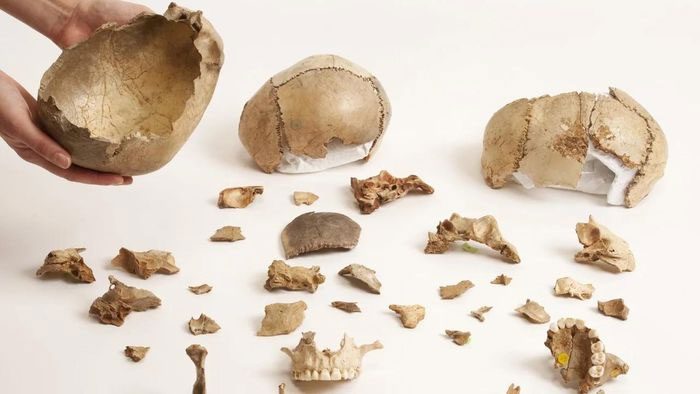According to a new study, cannibalism was a common burial practice in Europe around 15,000 years ago.
While previous researchers discovered gnawed human bones and skulls transformed into cups at Gough’s Cave in England, a new study published in the journal Quaternary Science Reviews indicates that this was not an isolated phenomenon.
Their research focused on the Magdalenian period of the Upper Paleolithic era, when the Magdalenian people lived approximately 11,000 to 17,000 years ago.

Researchers found gnawed human skulls at the Gough’s Cave site in England. (Photo: CNN).
Experts at the Natural History Museum in London identified 59 Magdalenian sites with human remains, most of which are located in France, along with sites in Germany, Spain, Russia, the United Kingdom, Belgium, Poland, the Czech Republic, and Portugal.
Fifteen sites showed evidence of human remains with bite marks, skulls with cut marks, and intentionally broken bones associated with marrow extraction for nutrition, indicating that cannibalism was practiced.
There is also evidence suggesting that in some cases, human remains were mixed with animal remains.
The researchers noted that the frequent occurrence of this phenomenon at sites across Northern and Western Europe suggests that cannibalism was a burial practice—rather than a dietary supplement—common in Magdalenian culture.
The study states: “It is undeniable that the frequency of cannibalism cases at Magdalenian sites exceeds any incidence of this behavior among prior or later hominin groups, indicating that cannibalism was a method the Magdalenian people applied to their deceased.”
Co-author of the study, Silvia Bello, a lead researcher at the Natural History Museum, said in a press release: “Instead of burying the dead, these people consumed them.”
Bello added: “That in itself is remarkable, as it represents the oldest evidence of cannibalism as a burial practice known to date.”


















































